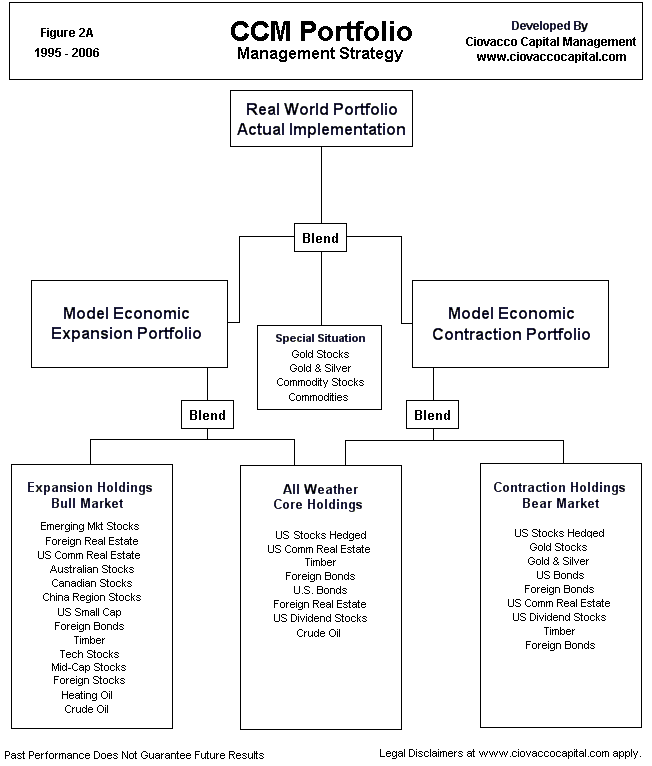Understanding Asset Allocation While Building a Portfolio
Post on: 2 Июнь, 2015 No Comment

A portfolio is essentially the sum of all of your different investments. These investments will probably include stocks, which are investments in individual businesses; bonds, which are investments in debt that are designed to earn interest; and mutual funds, which are essentially pools of money from many investors that are invested by professionals or according to indices. Building a winning portfolio is dependent on a number of factors, but it is important to remember that your portfolio should be designed according to your needs and goals. For that reason, your ideal portfolio may not be the same as another investors and you must carefully study your finances and your options in order to be successful. Unfortunately, there are few shortcuts in the world of investing.
Asset Allocation is the Key to Building a Successful Portfolio
One of the most important steps to building a successful portfolio is properly dividing assets among different types of investments. The most important asset classes are stocks, bonds, and cash. Because these investments perform differently depending on economic conditions, a good balance can keep a portfolio strong in a wide range of economic situations. In this sense, asset allocation may be the most important form of diversification. Also, asset classes carry varying amounts of risk, meaning that the best allocation will depend on a range of factors related to an individuals investing profile.
Consider Your Investing Goals, Risk Tolerance, and Time Horizons
When putting together an asset allocation plan, it is most important to consider investing goals, risk tolerance, and time horizons. Of course, all three of these factors are closely related. Essentially, they allow you to map out how much money you will need at certain points in your life and how much uncertainty you can tolerate in moving from one life stage to the next. Investing goals are closely tied to age and family situations. Younger people can generally tolerate more risk in their investments because they can afford to wait out bad patches and make up the difference later. Time horizons are simply the lengths of time until the invested money will be needed. Common examples are the time until a child starts college or the time until you retire. Again, long time horizons allow for riskier investments because a temporary downturn will not ruin the long-term plan.
Determine Your Investment Options
Once you have decided your time horizons and the level of risk youre comfortable with, the next step is to determine the investment options that are best for your profile. Higher risk opens the door to greater rewards, but those potential rewards are worthless if they are missing when the money is needed.
- Stocks offer the best long-term growth prospects to investors. In the long run, they have outperformed nearly all other investments, but they are also quite volatile, making them a riskier investment. Over shorter periods of time, stocks can lose a great deal of value. Also, the impressive performance of stocks is based on looking at stocks as a whole. Individual stocks may not keep up with the market as a whole, or they may become completely worthless (for example, if the company declares bankruptcy).
- Bonds are a safer investment with less spectacular returns over time. The lower returns are the cost of removing a great deal of volatility from the equation.
- Cash investments such as money markets are the safest investments, and, as expected, they deliver the lowest returns.

Assets should be divided among these major groups and possibly some more specific ones like real estate or international investments in order to create a portfolio that meets your specific needs in terms of risk and reward.
Asset Allocation Mutual Funds
In order to get some help with asset allocation without having to hire a financial adviser or become an expert, many investors turn to mutual funds. Asset allocation funds offer different mixes of stocks, bonds and other investments to fit different investing profiles. Alternatively, mutual funds can be used to provide diversification within different asset classes, meaning that you can simply divide your money among stock funds, bond funds and money market funds in the proper ratios.
Rebalancing Your Portfolio
An advantage to asset allocation funds is that they are constantly rebalanced to reflect the intended allocation among the asset classes. For investors using individual funds or picking their own investments within the classes, it is important to regularly rebalance the portfolio to reflect the ideal allocation that was initially determined.
For example, if your stock investments take off, you may find yourself with a greater than desired portion of your assets in stocks. At that point, you are taking on more risk than you would like to because the value of his portfolio has shifted as it has increased. The opposite phenomenon can occur if one portion of a portfolio underperforms. Of course, the tendency would be to abandon the underperforming asset class, but it is important to return it to the desired level of prominence in the portfolio in order to remain true to the initial goals and time horizons.
In order to rebalance, funds must be shifted from over-weighted areas of the portfolio to under-weighted ones, restoring the original mix of asset classes. Alternatively, new money can be invested in the under-weighted classes or money can be removed from the over-weighted classes, increasing or decreasing the total value of the portfolio respectively.
Using an Asset Allocation Tool
Alternatively, you can use an asset allocation tool, such as Personal Capital to help you build a better portfolio. This free tool lets you link all your investment accounts to your Personal Capital account. It then holistically analyzes all of your investments as one big portfolio. Based on your age and risk tolerance level, it will give you a suggested asset allocation breakdown, and you can see how your actual asset allocation stacks up against their recommendation.














